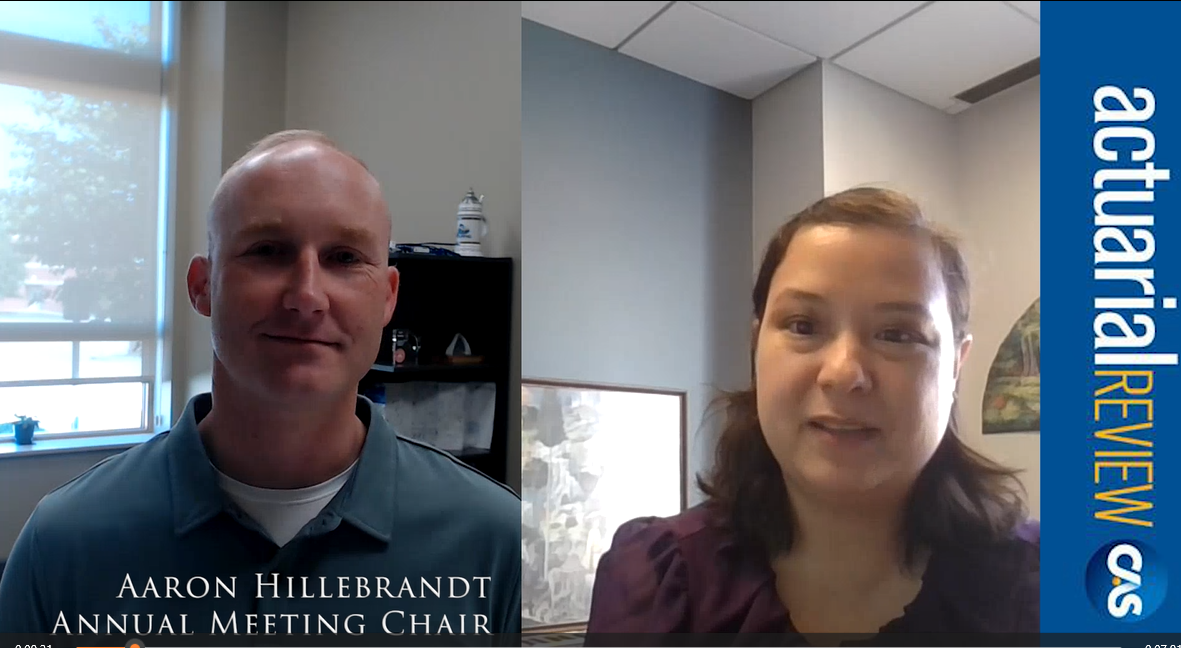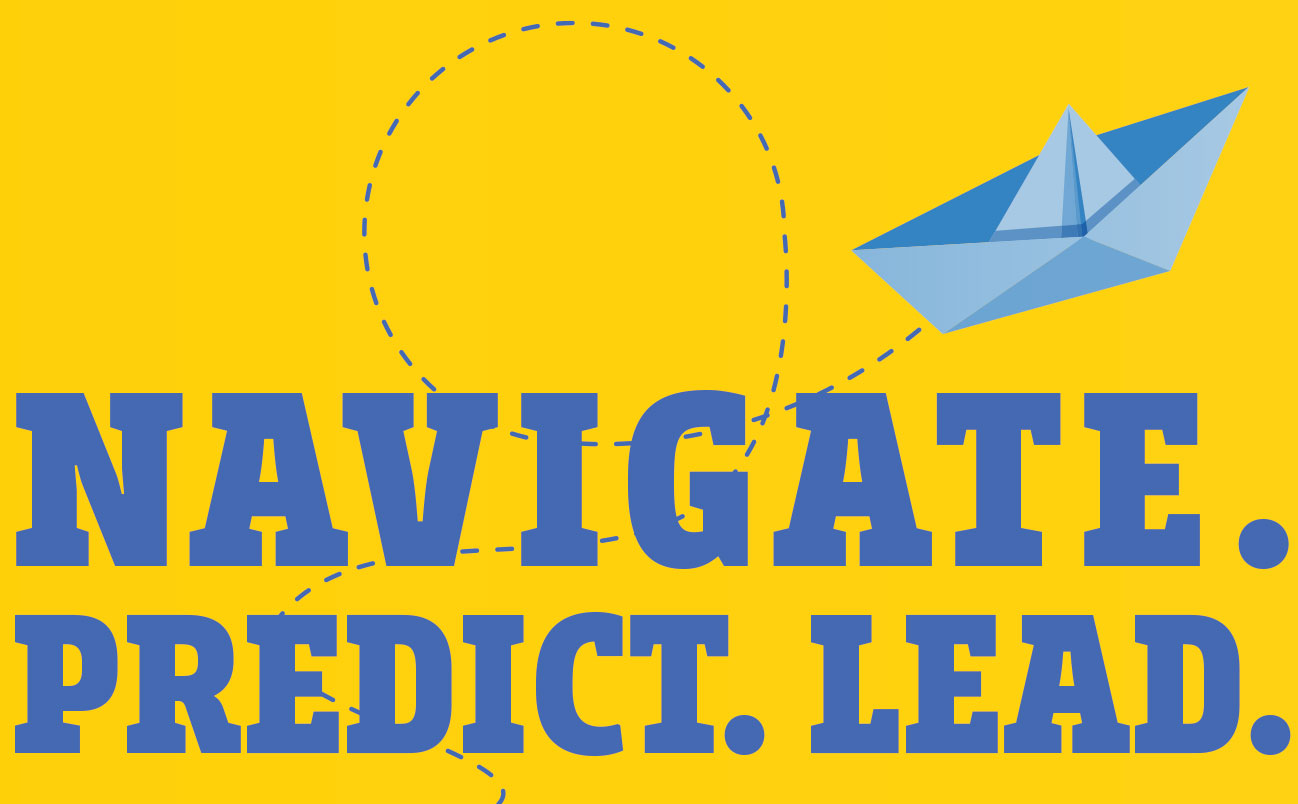
When the United States entered a sudden lockdown last March to prevent the spread of novel coronavirus COVID-19, volunteers and staff at the Casualty Actuarial Society (CAS) sprung into high-energy, collaborative action.
Besides immediately switching from in-person meetings and exams to virtual ones, the CAS also introduced a new and successful summer program for college students, made possible through volunteer-staff collaboration. “We have been able to operationally stick with our game plan … Nothing fell off the plate,” says Dr. Victor R. Carter-Bey, the CAS’s CEO.
All of the achievements were made possible by “a lot of great compromise and collaboration” between staff and volunteers, says CAS President Steve Armstrong. It also meant investing considerable time on short deadlines. Virtual events, Carter-Bey says, take three times more effort to carry out compared to in-person ones.
For CAS staff and volunteers, responding to COVID-19 at first meant making difficult decisions in a condensed amount of time. CAS volunteers amassed more than 1,000 hours planning and organizing virtual professional education events, from the start of COVID-19 lockdowns in March through October, says Dave Core, CAS director of professional education and research.
2020 decisions and events spurred by COVID-19
From April through September 2020, the CAS offered 23 webinars and four virtual workshops/boot camps. Following is a timeline of the events that took place along the way to where the CAS is now.
January 30. The World Health Organization (WHO) designates SARS-CoV-2, later termed COVID-19, a “public health emergency of international concern.” Originating in Wuhan, China, the highly contagious pathogen spread exponentially around the world, killing thousands in its wake. Within a month, leaders from nations across the globe restricted travel to quell the spread.
February 28. The number of people contracting the coronavirus well surpassed the SARS pandemic in 2002, which infected about 8,000 people worldwide. Although only 61 cases of COVID-19 were reported in the United States, as of this date, there were 84,544 cases worldwide, according to Metabiota, a firm that tracks pathogens.
“Tons” of speakers and attendees begin canceling attendance to the Enterprise Risk Management Symposium (ERM) in March due to COVID-19 concerns, recalls Kathleen Dean, CAS director of meeting services.
March 8-10. Speakers begin canceling on the first presentation day of the ERM Symposium. Anticipating similar circumstances, CAS staff and volunteers began contacting speakers to learn about their intentions for the Ratemaking, Product and Modeling (RPM) Seminar and Workshops, slated for March 23-25.
March 11. The WHO declares COVID-19 a pandemic. The governor of Louisiana puts his state in lockdown. The RPM Seminar is canceled and later moved to a virtual event scheduled July 28-29.
March 12. The CAS Board of Directors Meeting is postponed until virtual availability.
March 13. Carter-Bey approves the virtual Spring Meeting. “Not only did our CEO and our leadership support us in our quick move to virtual, but so did the members,” Dean says. “They trusted us to make it happen and let us run with it.”
March 16. The CAS Board of Directors Meeting takes place virtually.
CAS employees take work home, not knowing when they would physically meet again at the Arlington, Virginia headquarters. Working virtually will continue into 2021.
March 17. This day marks the first all-CAS staff virtual workday. Fortunately, Dean says many employees had already begun teleworking about twice a week, easing the adjustment.
The Spring Meeting is the first to go virtual. (See sidebar, “Saving the Spring Meeting.”) Announcements are sent to potential attendees.
April 1. The CAS signs a contract with its virtual platform vendor to offer the Seminar on Reinsurance online from June 1 to 2.
April 7. Spring Exams are postponed until November 2020. The CAS Board decides to move forward to standardized computer-based testing for exams, creating a safer and more efficient process. (See sidebar, “Exams Anew.”)
April 13. Planning and preparation begin for the new CAS Student Central Summer Program for college students who lost their internships due to the pandemic. (See sidebar, “CAS Introduces New College Actuarial Summer Program.”)
April 14. The CAS signs a contract with its virtual platform vendor to offer the Ratemaking, Product and Modeling Seminar as a virtual event July 28-29.
May 11–13. The CAS’s first large-scale online event, the CAS Spring Meeting, goes virtual with 732 attendees.
May 22. The CAS announces the Student Central Summer Program. Demand compels creation of a second, modified version for students who did not lose their internships.
June 1-2. The virtual Seminar on Reinsurance takes place, drawing 443 attendees.
June 15. The eight-week CAS Student Central Summer Program begins. The six-week program starts on June 29.
June 17. The CAS signs a contract with its virtual platform vendor to offer the Annual Meeting November 9-12.
July 7. For the Casualty Loss Reserve Seminar (CLRS), the CAS signs a contract with its virtual platform vendor to offer the event September 15-17.
July 21. For events in 2021 (RPM, Spring Meeting, Reinsurance and CLRS seminars), the CAS signs a contract with its virtual platform vendor to provide a virtual back-up, if needed.
July 28-29. Although a much smaller event with eight sessions instead of the usual 60, the virtual RPM Seminar still attracts 346 attendees.
August 7. College students successfully earn certificates for the first CAS Student Central Summer Program.
September 15-17. Core reports that the virtual CLRS draws 672 attendees, which was far more than expected.
November 9-10. The first virtual Annual Meeting will offer three complimentary webinars and three additional days of educational content. The CAS expects more than 750 attendees.
November 10-13. The first computerized and standardized MAS-I and MAS-II tests are offered virtually.
November 19-December 9. CAS Exams 5 through 9 are the first of their kind to be offered in a computerized, standardized format.
Looking ahead to 2021, five meetings are planned so far in either fully virtual or hybrid environment, two of which are already scheduled. They are:
- March 15-17, 2021. Ratemaking, Product and Modeling (RPM) Seminar and Workshops (online only).
- May 23-26, 2021. CAS Spring Meeting, Orlando, Fla. (in-person or hybrid).
Details for the Reinsurance Seminar (June), CLRS (September) and Annual Meeting (November) are yet to be determined.
The future as far as we know
Although adjusting to the COVID-19 pandemic required a formidable effort by volunteers and staff, it also inspired the CAS community to discover better ways to serve the property-casualty actuaries now and in the future.
The response to the lockdowns and travel restrictions arising from COVID-19 concerns fast-tracked the already intended transition for exams from paper-and-pencil to computer-based standardized testing. The CAS Student Central Summer Program is now permanent, encouraging college students toward the P&C actuarial profession.
Until the COVID-19 crisis abates, virtual and hybrid meetings will continue. Besides switching to virtual meetings and exams, the new CAS chief learning officer, Jennifer Naughton, will help the CAS adapt to the differences in adult learning styles by packaging and presenting material differently.
Naturally, the CAS and its members look forward to holding in-person meetings again. “A lot of members do want to gather — not just for knowledge and professional education, but for networking, collaborating and exchanging of ideas,” Carter-Bey says. The CAS has been offering hybrid events through livestreaming since 2015. He expects more hybrid meetings in the future because they allow both in-person and virtual gatherings.
Annmarie Geddes Baribeau has been covering insurance and actuarial topics for nearly 30 years. Find her blog at www.insurancecommunicators.com.
Exams Anew
It was perhaps the hardest decision to make. Somehow, there had to be a way to rescue the in-person Spring 2020 actuarial exams despite lockdowns and cancellations.
Doors were shutting everywhere. CAS President Steve Armstrong recalls that employers, who usually provide testing space and proctors, had to back out. “These are high-stakes exams,” says Ashley Zamperini, CAS director of admissions. “People spend 400 hours per exam to study, and we did not want to add more stress to the candidate by giving a bad testing experience.”
After trying everything possible to save the Spring Exams, the hard decision to cancel exams was announced on April 7, 2020. “For the level of change and pivoting and tweaking and adjustment needed, we looked at it from a risk-reward perspective,” explains CAS CEO Victor R. Carter-Bey. “It was a matter of what was in the best interest of the candidate.”
Thanks to staff and volunteers’ dedicated effort, the CAS is expecting exam-takers in record numbers. At press time, as many as 5,871 candidates are registered for a single sitting, surpassing the averages of 4,200 and 3,800 for spring and fall exams, respectively. A record number — 1,181 candidates — registered for more than one exam.
The exam sitting in November will include the Spring Exams that were canceled and Fall Exams that were already scheduled. These computer-based exams will use a new spreadsheet format, but the MAS-I and MAS-II test sittings, also in November, will use a new exam format slated to be implemented for other CAS exams beginning in 2021.
The new exam format offers several advantages. The computer-based testing provides real-life simulations of problems that candidates might experience doing actuarial work. It also offers a spreadsheet environment to do fast math and formula replications.
Zamperini explains that, rather than using paper and pencil in different testing environments, the CAS Fall Exams will be completely standardized — that means everyone will have the same testing experience. The monitor, computer, mouse, noise-canceling headphones are all the same at Pearson Professional Centers, which has locations across the globe. The new approach also eliminates the need for volunteers to proctor exams.
The difficult decision to cancel Spring Exams propelled the CAS Admissions Committee to pursue a previously established longer-term goal of standardization through computer-based testing. Such an accomplishment meant an all-hands-on-deck and time-sensitive approach free of egos, Armstrong says. “What we thought took 18 to 20 months could happen in four to six months,” he says of the project. The number one goal is to ensure a robust, fair administration of exams.
“We pretty much had to change everything in our processes,” Zamperini explains. Maintaining the integrity of the exam process meant working to ensure the highest levels of security possible in a virtual environment, accounting for candidate and proctor safety, simplifying registration, engaging in more thorough communications, converting questions for a computer-based environment and supporting virtual grading.
Even the place of testing had to change. Armstrong explains that employers traditionally provided free space and proctors for testing, but that was not possible in a COVID-19 situation.
Thankfully, the CAS was well-positioned to transition the testing venue from employer-based locations to a choice of hundreds of testing areas across the globe. Last year the CAS’s Syllabus and Examination Committee’s Computer-Based Technology Task Force chose a vendor called Pearson VUE. In January staff contracted the computer testing company to offer virtual testing for the 2020 MAS-I and MAS-II exams in November. The partnership enabled the CAS to secure dates for the Fall Exams.
The transition from in-person to virtual testing was a “massive volunteer effort,” Zamperini says. The move included converting questions to an electronic format. Volunteers are part of the CAS’s Syllabus and Examination Committee, which is made up of roughly 800 volunteers.
But the effort is not yet over. For next year’s exams, volunteers have already started writing questions. Usually, Exams 7 and 9 are offered in the spring, and Exam 8 in the fall; all exams are planned to be presented next spring.
Saving the Spring Meeting
Volunteers and staff were able to save the Spring Meeting by making major modifications, thanks to a pilot project in October 2019. Initially, the pilot project responded to the CAS’s Employers Advisory Council seeking ways to reduce transportation costs.
The approach made sense for other reasons as well, says Nora Potter, CAS international and online professional education manager. Offering the In Focus Seminar virtually also made sense because it allows the international audience to participate, explains Potter, who found the vendor and facilitated the CAS’s first virtual meeting. She adds that since the topic for the In Focus Seminar changes every year and attracts different audiences, the virtual format allows more flexibility.
Members of the Planning Committee were passionate about making sure that the Spring Meeting was going to happen. The Planning Committee reached out to speakers, which was not a typical task, and the speakers were trained how to use the platform. Volunteers and staff from other departments learned how to use the virtual platform to help run the sessions.
“We had to turn around in five weeks what we normally do in eight weeks when working with a virtual vendor,” Potter explains. The biggest challenge was persuading speakers to get on board with delivering virtual presentations, says David Core, CAS’s director of professional education and research. Speakers had to meet technical equipment requirements at home without their company’s IT department support.
“The Spring Meeting Committee wanted to do as many sessions as they could do,” Potter recalls. Ultimately, the number of Spring Meeting sessions dropped from 40 to 25, Core notes. Still, the meeting offered 14.5 continuing education hours, only slightly less than the usual 15 to 16 hours.
CAS Introduces New College Actuarial Summer Program
When CAS President Steve Armstrong learned that in-person internships were drying up due to the COVID-19 pandemic limitations, he came up with an idea. What if the CAS were to offer students a meaningful alternative?
What he did not expect, however, was the enthusiastic demand for the new CAS Student Central Summer Program. Specifically, more than 630 students enrolled in the program.
The summer program provided college students the opportunity to learn skills, network and acquire technical know-how in critical domains in the “property-casualty actuarial space,” says Dr. Victor R. Carter-Bey, the CAS’s CEO. He explains that, besides offering a playbook to gain actuarial experience, the summer program also builds greater relations between the CAS and students.
Volunteers were also enthusiastic. “The actuaries thought back to how they would have felt had their first summer internship been canceled,” says Tamar Gertner, CAS director of engagement, “and immediately wanted to help.”
In a mere six weeks, the 50-member University Engagement Committee and staff formed a task force to develop an eight-week program for students whose internships were lost or greatly modified. About 155 students from seven countries representing 70 universities took part in the CAS Internship Program, which included live webinars, assignments, a case competition and mentorship.
The program’s popularity also spurred the committee to develop an abbreviated offering for the 475 students who did not lose their traditional internships but still wanted to participate. The independent program was condensed to six weeks, but did not include the case competition and mentorship.
Gertner observes that students in the eight-week course ranked mentorship as the best part of the program.
Program planning began on April 13. Gertner says that they were fortunate to have the curriculum already available, thanks to a catalog of material, including case studies and competitions, which volunteers had been assembling for more than seven years. The educational information was originally developed to encourage actuarial professors, who tend to have expertise in life and health insurance, to introduce exercises specific to property-casualty coverage, she adds.
Starting Monday, June 15, the eight-week program covered topics including an introduction to P&C insurance and Excel, along with data visualization, ratemaking, reserving and predictive modeling. The abbreviated six-week program started on Monday, June 29. Both were completed on Friday, August 7.
Besides producing and assembling educational material, the task force found 94 mentors for the students. Gertner observes that students in the eight-week course ranked mentorship as the best part of the program. Those in the six-week independent program appreciated the opportunity to learn the material at their own pace while leveraging a private LinkedIn page developed for participants who wanted to collaborate on the material. Additionally, 23 CAS volunteers served as webinar presenters and 19 as case competition judges.














